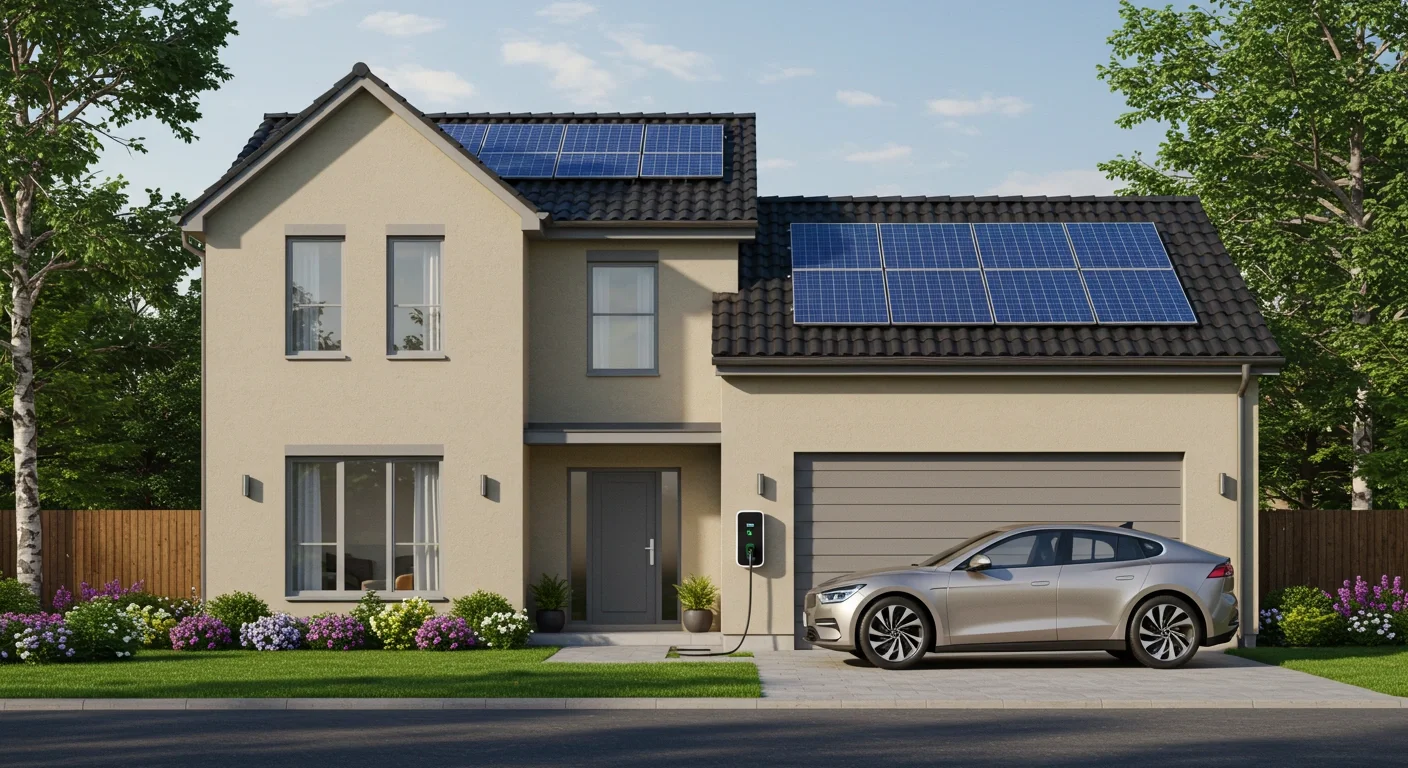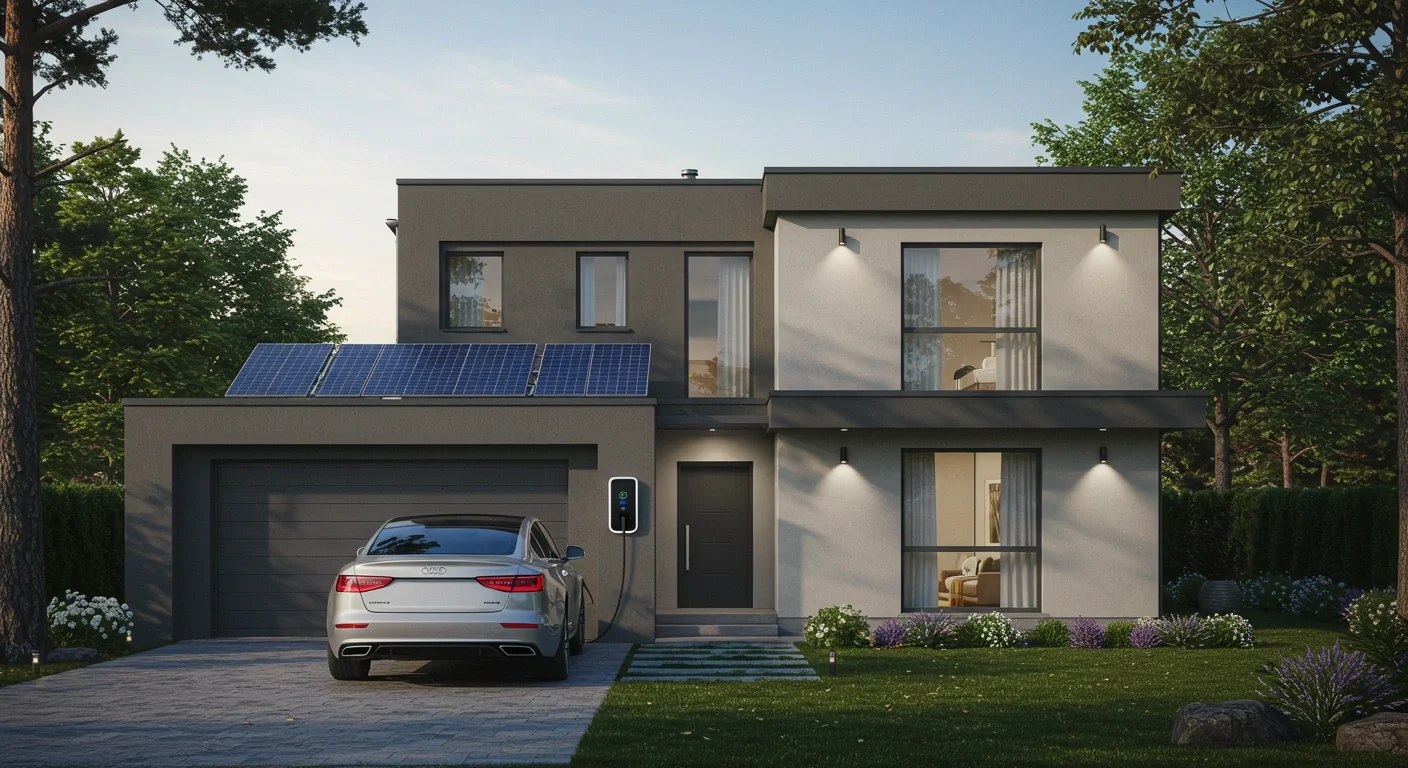Solar-Powered EV Charging: Is It Worth It in Melbourne?
Electric vehicles are everywhere now, from family driveways to inner-city car parks. But while driving one feels clean and futuristic, charging it on the grid still hits the wallet harder than many expect. That’s where solar-powered EV charging enters the picture.
In theory, it sounds perfect. Pair solar panels with an EV charger and drive for next to nothing, right? But this is Melbourne, where the weather flips faster than a tradie at peak traffic, and installation costs aren’t exactly pocket change. So, is it actually worth it?
Let’s break down what solar EV charging really involves, whether Melbourne’s conditions support it, and how to weigh the long-term value against the upfront investment.
What Does Solar EV Charging Involve?
Solar-powered EV charging isn’t complicated. If you’ve already got solar panels on your roof, you’re halfway there. The idea is simple: capture energy from the sun, convert it into usable electricity, and feed it directly to your EV charger. No middleman, no peak-hour tariffs.
A typical system includes:
Solar panels (usually 6.6kW or larger)
An inverter to manage current flow
A wall-mounted EV charger
Optional battery storage for after-sunset charging
There are two common setups:
On-grid: Solar panels power your EV and home. Excess energy goes back to the grid, earning feed-in credits.
Off-grid with storage: Panels feed a battery that powers your car, even after sundown. This offers more independence, especially during blackouts or high-demand periods.
Hardware matters here, but so does your home setup, roof space, and power usage, with how solar EV charging works. This isn't plug-and-play; it’s system design that needs to match your daily habits.
Does Melbourne Get Enough Sun for This to Work?
Melbourne’s weather has a reputation, sure, but solar still holds its ground here. The city receives around 6.6 peak sun hours daily on average, which is more than enough to keep a well-installed system running efficiently across the year.
Winter does cut production, but with smart planning (panel orientation, roof tilt, and system sizing), output remains reliable. Suburbs in the north and west, like Coburg, Essendon, and Sunshine, tend to perform better due to lower shade cover and better roof exposure.
Still, solar performance depends heavily on the property itself. Shading, roof design, and structure all influence the payoff. That’s why a proper site check should always come first.
The Real Costs: Setup, Maintenance & Payback Timeline
Solar EV charging isn’t cheap up front, but it’s rarely a sunk cost. A full setup in Melbourne typically ranges from $7,000 to $15,000, depending on system size, charger type, and whether battery storage is included.
Here’s the rough breakdown:
Solar system (6.6kW or larger): $4,500–$7,500
EV charger: $1,200–$2,500 installed
Battery storage (optional): $7,000+
Routine maintenance is low, including panel cleaning, inverter checks, and charger servicing every few years. Batteries need replacement roughly every 10 years, but that depends on brand and usage.
Homeowners may qualify for up to $1,400 off through Solar Victoria, plus interest-free loans. When paired with federal incentives, the entry cost drops even further.
Return on investment? Most households start seeing meaningful savings from year one, with full payback typically between 7 and 10 years, especially when charging is scheduled to match solar output and grid dependency is kept low.
How It Compares: Solar Charging vs Grid Charging
Charging an EV from the grid might be convenient, but it’s far from cheap. As electricity prices climb across Victoria, even off-peak rates chip away at the cost advantage of driving electric. That’s where solar steps in, not just to cut bills, but to offer control.
Here’s the basic comparison:
Grid charging exposes you to rising tariffs and peak-hour surcharges.
Solar charging, especially when scheduled for daytime, slashes those costs significantly.
And it’s not just about price. Charging from the grid often means tapping into energy generated by coal or gas. A solar-powered charge is cleaner, with zero direct emissions. Add in battery storage, and you’re driving on sunlight, even after dark.
Convenience also plays a role. With a home system, there’s no queuing at public stations or waiting for availability. You plug in, schedule smartly, and start the day fully charged.
When Solar Charging May Not Be Worth It
Solar EV charging makes sense for many, but not for everyone. And here’s where things need to be said plainly.
It might not be worth it if:
Your roof gets limited sunlight, especially from heavy shading or poor orientation.
Strata rules or heritage overlays restrict modifications.
Your switchboard or wiring is outdated, requiring major upgrades just to support the load.
You barely drive, or don’t charge at home regularly enough to make use of the system.
In these cases, the payback stretches far longer, or never materialises at all. That’s why the system needs to be matched to the site and the usage habits, not just thrown in because it sounds good.
When It Absolutely Is Worth It
Now, flip the lens. Solar EV charging often is worth it when the conditions line up.
It makes a strong case if:
Your home gets reliable sunlight, with enough roof space for 6.6kW+ systems.
You drive regularly or have more than one EV in the household.
You're planning to stay long-term, so payback happens on your watch.
You want more control over energy bills, especially during peak grid pricing.
You’re building or renovating, and can integrate the system into the structure.
For many of our clients across Melbourne, it's about long-term practicality rather than trends. At Melbourne Wiring Services, we’ve advised homeowners, developers, and investment property managers looking to reduce running costs and boost resale value with future-ready energy setups.
A solar EV system is never about going green for the sake of it. But about doing the maths, checking the roof, and building something that pays off over time.
Key Considerations Before You Commit
Before you dive into solar-powered EV charging, a few things need to be nailed down. These aren’t fine print, they’re make-or-break.
Here’s what we advise clients to check:
Roof suitability – Orientation, tilt, and shading all impact solar output.
System sizing – Can your panels cover both home energy and EV charging?
EV charging habits – Night charging? You may need battery storage.
Switchboard capacity – Older homes might require upgrades before installation.
Rebate eligibility – Solar Victoria offers generous support, but conditions apply.
Strata or council restrictions – Especially in townhouses, apartments, or heritage zones.
These are the first boxes we help clients tick off before a single panel goes on. No guesswork, no assumptions, just a clear look at what works and what doesn’t.
So, Is It Worth It?
If you’ve got the sunlight, the setup, and the daily driving to back it, yes, solar-powered EV charging is worth it in Melbourne. Not because it’s trendy, but because it stacks real savings against rising electricity costs and grid dependency.
It’s not for every home. But for the right ones, it means lower bills, less carbon, and more control over how and when your vehicle charges.
At Melbourne Wiring Services, we help you make that call with clarity, then back it with the right installation strategy, gear, and support. If you're looking to power your EV smarter, let’s start with a proper assessment and see if solar really adds up for your property.
Frequently Asked Questions
-
Yes, if your current system has enough output and your inverter can handle the load. In many cases, upgrades or expansions are needed to support EV charging without straining your setup.
-
Charging time varies based on your EV model and charger type. With a 7kW charger powered by solar during the day, most EVs take 6–10 hours for a full charge.
-
Solar production drops, but smart systems can switch to grid power or draw from a battery if installed. Scheduling your charging during the sunniest hours still makes the most of what’s available.


